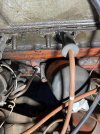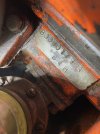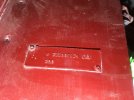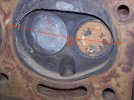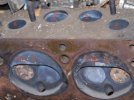identification info on my engine block, stamp B006017 964BH SX
Matthew,
More pictures of the engine than just serial number might help identification, specifically the head, manifolds and how the dipstick is installed. Just curious if you have an alloy head or an iron head.
The stamping might be a bit different than what you think. Incorrect or poorly stamped engine blocks are known to exist.
I'll try and make a guess about what
seems to be your block stamping until additional verification. May not be correct.
Is it possible your stamping is actually
"B006017964 BW LSX"?
I'm not sure if an engine destined for Canada would have been considered as a "Home" market destination without right hand drive. The separation of the last three digits should look as if a different stamp holder was used than the first part of the serial and not much care was used to align first and second parts.
The serial seems to fit the Series VI Minx Deluxe series of builds which began in 1965 with B006000001.
That model was produced for three years or so. The Audax time period serials didn't really specify the year of production, just the model. The "17964" is the sequential number, probably in the later half of production. You could check the casting date on the block for a better idea.
Breakdown =
nine digits after B
B = production in 1960's decade
----------------------------------------------
"006" = model - Series VI Minx Deluxe
----------------------------------------------
"017964" sequential production number
-----------------------------------------------
BW = Borg Warner Automatic transmission
1st position--------------------------------( with an "H" in first position, third should usually be "O")
H = Home market
R = right hand drive - export
L = left hand drive - export
2nd position----------------------------------
S =Saloon
Third position----------------------------------
X = non standard - usually sealed beam head lights
O = Standard
-----------------------------------
Hope all this rambling is coherent and helpful,


